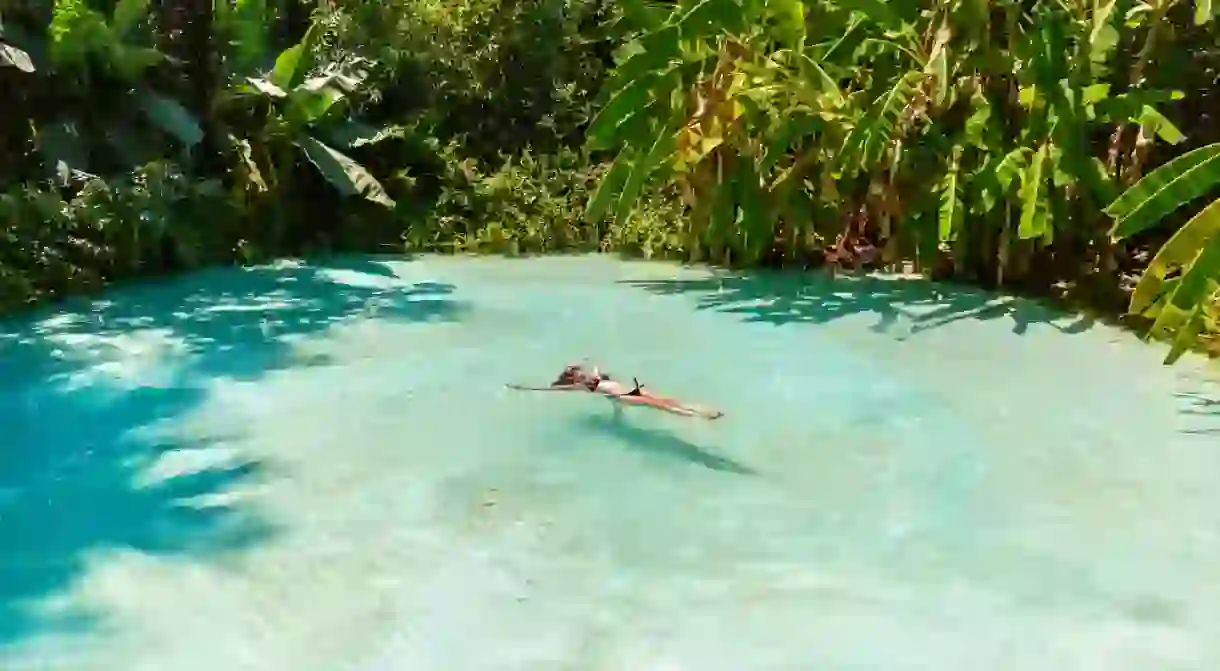14 Epic Places In Brazil Even Brazilians Don't Know About

Brazil’s vast size hasn’t stopped global travellers and locals reaching out to discover its fascinating corners. While Rio de Janeiro, Pantanal and the Amazon rainforest are some of the most explored, there are plenty of regions that have gone untouched and provide a bounty of unforgettable experiences. Here are 14 places you may not have heard of.
Mount Roraima
This spell-binding tabletop mountain borders Venezuela, Brazil and Guyana and is one of the oldest geographical formations on Earth, at approximately two billion years old. The flat summit spans 31 squared kilometers with 400 meter high sheer cliffs on all sides. There are some incredible yet immensely challenging trails to the top.

Baia dos Porcos
Bay of the Pigs is in the north of Brazil on the exclusive Fernando de Noronha island. White sandy beaches and crystal clear waters create an idyllic setting for the classic definition of beach paradise. The region enjoys an abundance of astonishing marine life such as tropical fish, reefs, dolphins, turtles and reef sharks: a perfect arena for snorkelling and diving.

Jalapão
Characterized by its cerrado vegetation, vibrant orange sand dunes and remarkable wildlife, Jalapão in the eastern state of Tocantins is an adventurers’ paradise, with dramatic scenery and epic hikes. It is also home to rare animals such as the jaguar and the shy maned wolf.

Lençois Maranhenses
A hidden paradise in the northeast of Brazil, Lençois Maranhenses is a collection of serene white sand dunes. The dips in between the peaks turn into freshwater lagoons during the rainy season, creating a contrast of rippling blue waters and ivory sands. The two largest lagoons in the region are Lagoa Azul and Lagoa Bonito that become a rich container of freshwater life when the rains come.

Dunas de Genipabu, Rio Grande do Norte
A photo of this dune-filled landscape will look very different the next week, even if taken in exactly the same spot. The winds in Dunas de Genipabu work constantly to shift and move the dunes, although often the change is subtle. Bold lakes and an untouched nature reserve define this key region in Rio Grande do Norte where thrill-seekers can slide down the high dunes on bum-boards.
Gruta do Lago Azul
This flooded cavity lies in the heart of Bonito in Mato Grosso do Sul, fed by an underground river that is yet to be discovered. The water of the pool is an astonishing vibrant blue, a natural phenomena from the sunlight reflecting off the surface. Sloping down to depths of up to 200 feet, the bottom of the cave holds an extraordinary collection of prehistoric bones and fossils of giant sloths and saber-tooth tigers.

Chapada dos Veadeiros
This huge national park spans across the Goias in the central region of Brazil and is notable for its abundance of waterfalls, thriving wildlife populations and unusual quartz rock formations. The plateau is ancient, dating back 1.8 billion years, and has a sprinkling of crystal outcrops that attract therapists seeking the energy from these aged crystals.

Canoa Quebrada
Also know as the Pearl Coast of Ceara, this nickname is a token to its glorious white beaches and crystal-clear sea that stretches back at a steady waist-high depth for several meters, letting bathers wade in the warm, clean waters. Along the beach’s long shores are several wind traps that make the region a kitesurfer’s haven.

Itacaré, Bahia
The dense vegetation of the Atlantic Forest thins out into rows of palm trees before giving way to wild stretches of golden sand and the warm, turquoise ocean. Located in the cocoa zone of Bahia, this region never truly lets go of summer with daily sunshine and temperatures rarely falling below 20 degrees Celsius.

Canyon Itaimbézinho
Nestled on the border between Rio Grande do Sul and Santa Catarina is a magnificent canyon that is a part of the Aparados de Serra National Park. The base of the canyon is a five kilometer stretch flanked by rugged, wind-buckled cliffs that reach up to 720 meter peaks. Canyon Itaimbézinho offers wonderful hiking opportunities with dramatic scenery and challenging paths.
Ouro Preto
Admittedly, Ouro Preto is widely known among Brazilians, but is often missed off tourist checklists. Distinguished by its colonial architecture and steep, winding cobbled streets, it’s easy to mistake this town as a sleepy haven of quiet bars and good restaurants serving food typical from Minas Gerais. Yet, thanks to a large student population, this image quickly changes when Carnival comes and student halls become all night parties and the streets fill with all-day parades and live music.

Cascata do Caracol, Rio Grande do Sul
Cascata do Caracol is a huge waterfall in Rio Grande do Sul that spills off the cliff into the cavity below. After heavy rains, the sound of the waterfall’s power is deafening. Nearby is a 100 foot high observation tower with panoramic views and close ups of the waterfall.

Belem
As the capital and largest city of the Brazilian state of Pará, most – if not all – Brazilians will have heard of Belem, but few will have visited. There are some hidden gems in Belem, such as the parts of the city that retain their colonial charm with tree-filled squares and traditional blue-tiled buildings. Ver-o-peso is a wonderful open-air market on the river selling Amazonian foods, fruits, fish and hand-crafts. The city maintain warm temperatures all year round, hovering around 20 degrees celsius during the winter.
Foz do Iguaçu
While known in Brazil, many still haven’t visited these incredible waterfalls. Iguaçu Falls are some of the world’s largest waterfalls, a series of hundreds of falls that straddle the border between Argentina and Brazil. The deafening sound of water cascading over the side is spell-binding and their immense power is humbling. The row of waterfalls line up across 2.7 kilometers, including the 80 meter Devils’ Throat. Thrill-seekers can take a boat trip right up to the crashing water on one of the regular tours.














